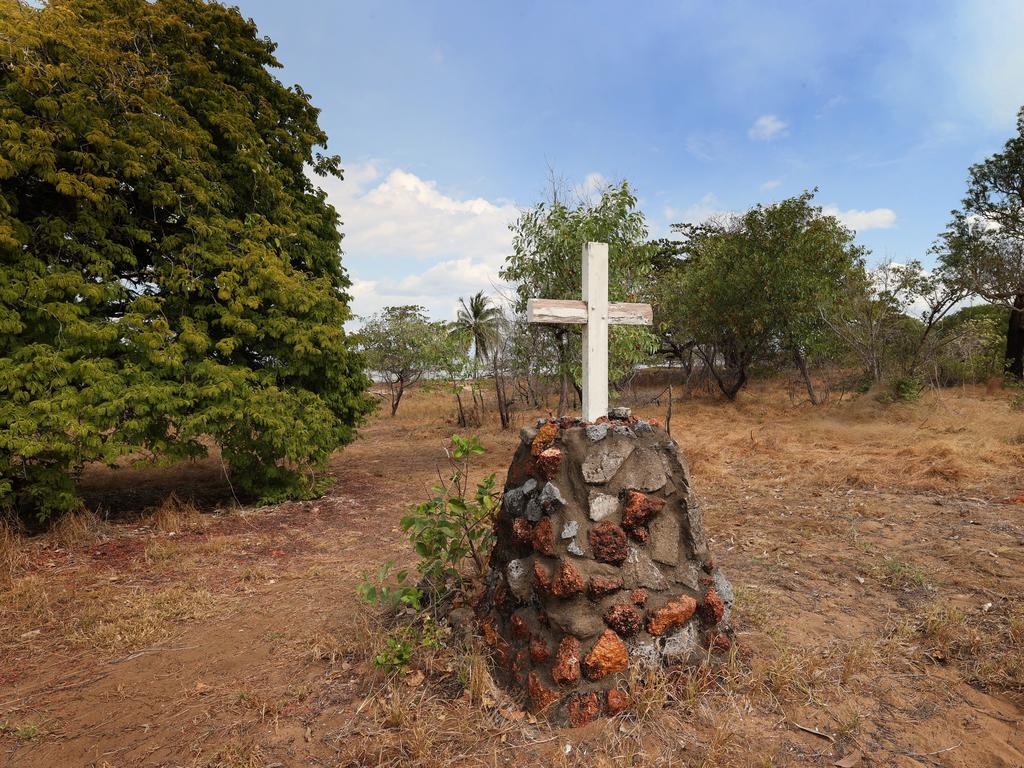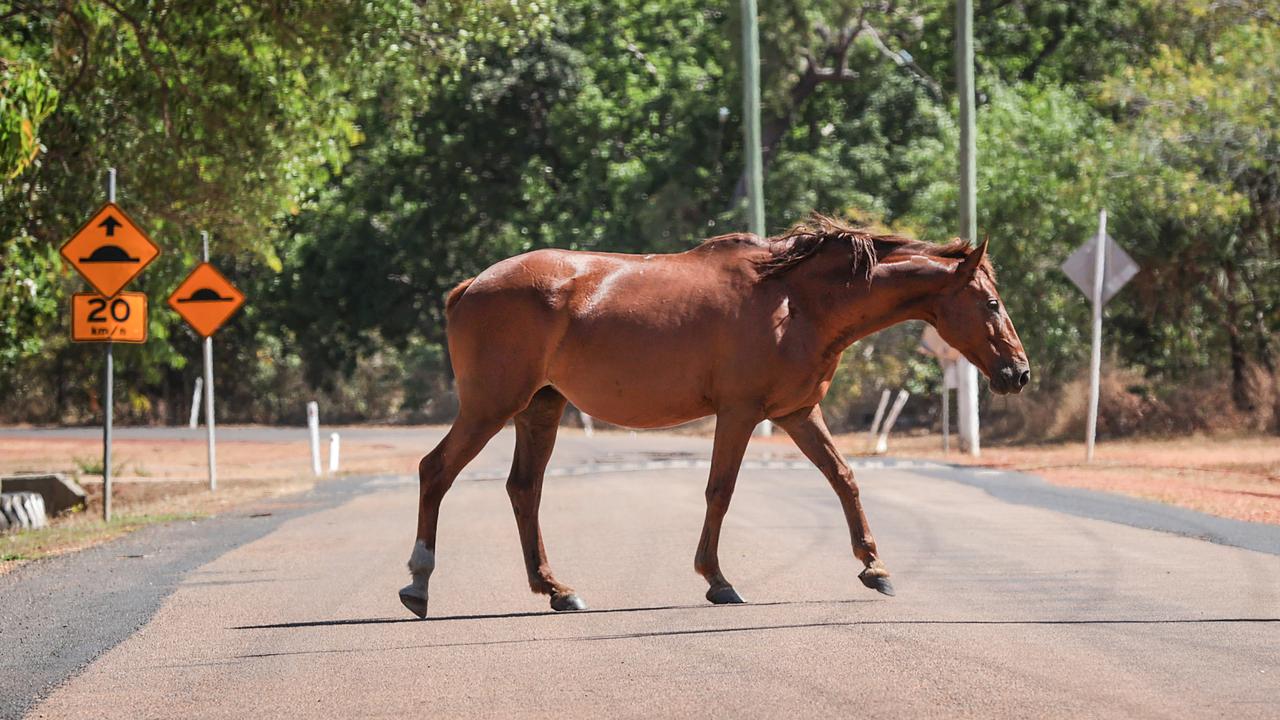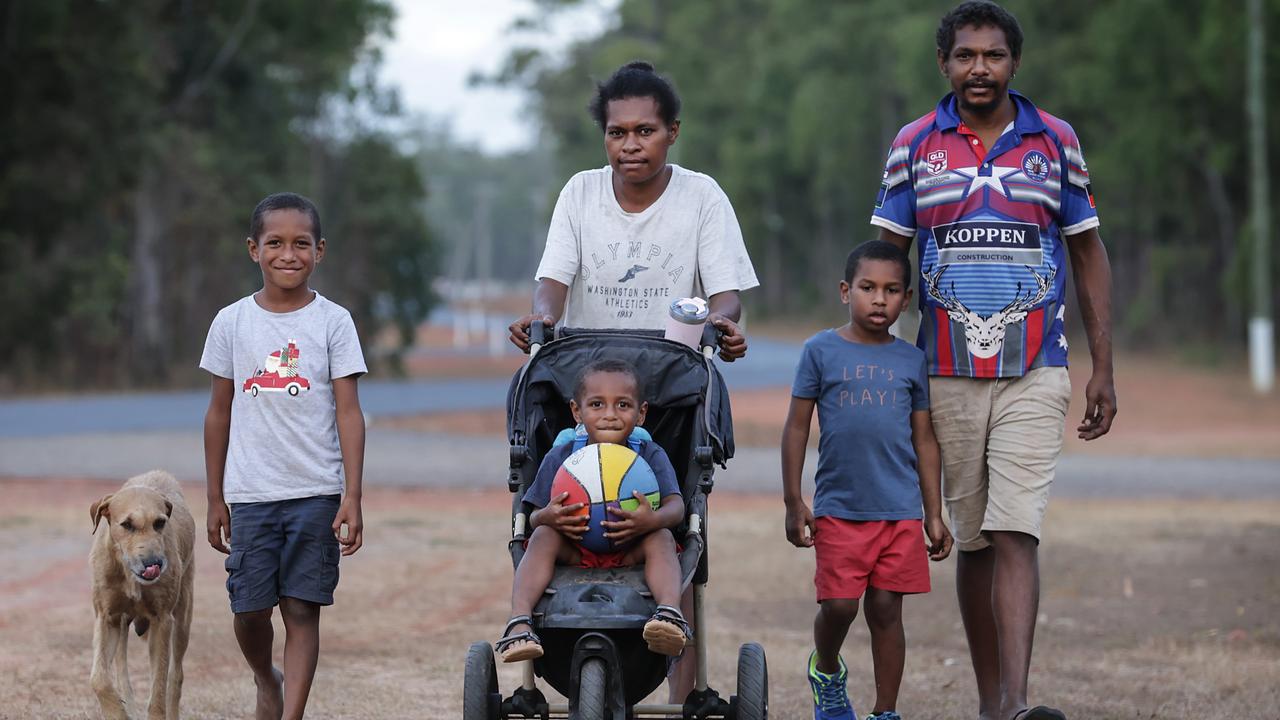Closing the Gap: Push to end ‘blame game’ and let Indigenous help themselves
Residents in this small Aussie town were forcibly evicted, and their homes burnt to the ground. But despite all odds, the town remains and has become a symbol of pride.
There are fewer flies up here, says Aileen Addo, but more ants, as she winces from another bite to her foot.
She’s in the sands at Old Mapoon in the far west of Cape York, a very long way from Canberra, where she once visited and does not plan to return.
Simple considerations drive the mayor of Mapoon, a remote Indigenous community. Addo, a former health worker, seeks an end to the “blame game”, arguing that Indigenous people in remote communities must help themselves.
There must be a better understanding of outcomes, she says, from the moment a mother conceives.
Get ’em young, that’s her motto.
“It’s that river of life,” she explains. “We seem to be catching stuff down the bottom. We should be working at the top to address those problems rather than catching them downstream.”

Mapoon has problems, as all remote Indigenous communities do. Its official 2021 unemployment rate of 27 per cent was more than five times the national figure. It’s year 12 or higher qualification rate was less than one third of the rest of the nation.
Yet Mapoon avoids the trademark plights of some communities. There is little serious crime here, which explains why Addo’s pleas for a permanent police presence have gone ignored.
There’s grog, but it’s limited, in a set-up that locals extol as a solution to the binge-drinking excesses of so-called dry communities.
Jobs are available at the nearby mines, which were long a hulking foe to traditional lifestyles. And the primary school attendance rate of about 80 per cent is considered high.
The rhetoric for symbolic change (and the pursuit of national abstractions) doesn’t mean much, not when debates about Australia Day or the Voice compete with the need for drinking water storage or the lack of housing.
Addo has that oomph common to the leaders around here. At 74, she projects undimmed passion for tourist initiatives and a redevelopment of the old mission site. She seeks to look forwards, not back.
Yet Addo appreciates that here, in Mapoon, the past informs the future aims of Closing the Gap.
Mapoon came about as a church mission from 1891, where “half-caste” children were dumped from the Torres Strait and the Cape, apparently for their own protection.
The policy shapes today’s hotchpotch of heritages, which blends Torres Strait Islanders, Aboriginal, European and Papua New Guineans. In Mapoon, no one mob dominates the other mobs.
The mission sat on this beach, where dried palm fronds rattle in the breeze like a haunting reminder. Some good things happened here, some argue. But everyone bows to the bad.
The Presbyterian Church lost the care, and the funds, to keep this place functioning in the 1950s. Mining companies discovered that the deep red of these lands spelled bauxite and untold millions of dollars in aluminium production.

What the local Indigenous people wanted did not matter; they huffed, almost entirely unheard.
The people were urged to go; conditions would only get worse. But they did not want to leave their home.
It was 60 years ago this November, a week before the death of JFK. It is known as “The Burning”.
It was late at night. Police officers shone lights on the faces of sleeping residents. They were evicting the so-called ringleaders of the push to save Mapoon from closure.
There was screaming. The people were put on a barge, and sent 200km north to start a new life in leaky housing at what would be called New Mapoon. They saw their houses burning as they left, as birds flew in a V formation above. The place would be razed.

Justina Reid, who works in Mapoon’s new cultural centre, knows the story well. Her great grandfather, Robert, was a Mapoon ringleader who never got to come home.
“When we asked questions, they wouldn’t tell us,” she says of older family members. “It hurt so much they couldn’t speak of it.”
The yearning to return did not fade. They started coming back in the mid-1970s. Nothing was here.
The father of Jaydon West-Busch, a poster boy for a brighter future in Indigenous communities, came to Mapoon about age 12 in the 1970s.
There were few machines. Everything was cleared by hand. West-Busch, a carpenter, bows to the tales. “Everything was done the hardest way possible,” he explains.
A few shacks became a few more. A little village rose from the ashes of the old mission. It grew to be a corporation, then eventually a local council, when the state government apologised for the historical mistreatment.
The people of Mapoon, powerless for generations, shaped their own destinies by returning to the place they called “home”.
It has a name taught at the primary school, where attendance posters urge kids to “Try For 5!”
It’s called “Mapoon pride”.
“If you want to dwell on your past then you’re just wasting all that energy,” Addo says. “I’m putting all my energy into the future. And I think a lot of Mapoon people feel that way too. You don’t forget, but you’re not going to live in the past.”
Mapoon, a growing dot of 432 people, is bordered by gorgeous sands and twinkling waters, an hour north of the mining town of Weipa.
Beware the deadly snakes, and the odd croc crossing the road, should you visit the site of the old mission on the Cullen Point foreshore.
The “new” community is tidier than most. Speed humps outnumber cars on the road.
People speak of Dougie as an exemplar. Dougie is confined to a scooter by severe heart problems. When he sees litter, he stands up to collect it, and bins it in his scooter basket.
Tom Smith, the council chief executive, marvels at the resilience needed to withstand 3m of rainfall each wet season.
He identifies unique unity in Mapoon, citing the collective recovery after a cyclone took out power and blocked roads in 2019. Yet he also nods to realities, such as the need for a town-wide sewerage system.
Smith is a veteran of Queensland Indigenous communities, and he knows that their biggest challenge lies in their remoteness. The tyranny of distance begets the tyranny of cost.
“They don’t wait,” he says of the council led by Addo. “If you don’t ask, you don’t get. So, they keep asking.”

The latest version of Closing the Gap isolates 17 measures of disadvantage. What’s clear after visiting remote Indigenous communities is that these discrete measures are hopelessly knotted.
Sad circles of despair can be pencilled. A lack of education leads to a lack of employment, which leads to criminality. Alcoholism leads to chronic disease, but also to underfed children, which leads to truancy, which leads to a lack of education. And so on.
One theory goes that tackling one measure successfully – to break the daisy chain of disadvantage – will improve other measures.
This drives Addo’s approach to the Gap measure of development outcomes from ages 0-5.
Remote areas sit on 16 per cent of children who hit all five targets (such as wellbeing and cognitive skills) of the Australian Early Development Census. The stated target of 55 per cent, for the short-term at least, seems impossibly stranded from the reality.
Addo’s mantras are simple. Keep kids healthy. Feed them well. Instil habits that avoid chronic disease and promote aspiration. Individual responsibility underpins her attitude. If you sit around watching TV and eating fast food, then it’s your fault if your health declines.
Mapoon’s alcohol carriage limit – three slabs of mid-strength beer per car (with passengers) per week – is credited for lower than usual figures of crime and violence.
Drunkenness was a serious problem when Mapoon was “dry”. Addo now frets about drugs, mostly marijuana, which inhibit a household’s ability to cover living expenses. Drug use fans domestic violence, which she is certain is under-reported.
In her thinking, kids need to get year 12 (elsewhere, such as Cairns or Weipa, given the lack of a high school in Mapoon) and get qualified. They can come home, when they’re ready, and contribute to a better Mapoon.

A case study in point is Jaydon West-Busch, 23, home after stints in Cairns and Brisbane, and doing subcontract work for the council. He doesn’t smoke, barely drinks, and straddles traditional custom and western practicality (he jumped a croc the other day. It’s easy, he says – just squeeze the neck hard). The lessons of his father run deep.
“I think you’ve got to get into the youth more early,” West-Busch says. “Maybe more youth workers in communities … getting into brains of youth straight away instead of later in life after their mistakes.”

John Tabulai is walking down the street with wife Lisa and their three sons. The pram is filled with root oysters, which will be dinner, once the shells pop in the fire, and the meat is sweetened with lemon.
He’s 31, and explains he has been on dialysis since early childhood. But he hunts – wild cattle, pigs or shellfish in the mangroves.
He has to, given the prohibitive cost of meat. “I’ve got to provide. I’m the provider. That’s how it’s always been, bro, from my dad and his dad. I’m going to pass it on to my boys. Teach them how to hunt, spear- making and everything.”
Connection with country is no empty cliche around here.

Go fishing with Marcus Royan, try out his secret fishing spots on Namaleta Creek, where crocs bask in rows on the shore. His exhilaration when a barra bites is infectious.
He does this for a living, driving a rustyHilux pulling the old boat to the Cullen Point boat ramp two or three times a day. The money is good, maybe $20 a kilo, which adds up when you can net up to 150 barra a day. He cannot imagine any other way. “I will live here until I die,” he says.
As Addo puts it, Royan and his people’s future stands on “solid ground” in Mapoon.
Sadly, it’s a way of thinking that many remote Indigenous communities cannot claim.
More Coverage
Originally published as Closing the Gap: Push to end ‘blame game’ and let Indigenous help themselves





